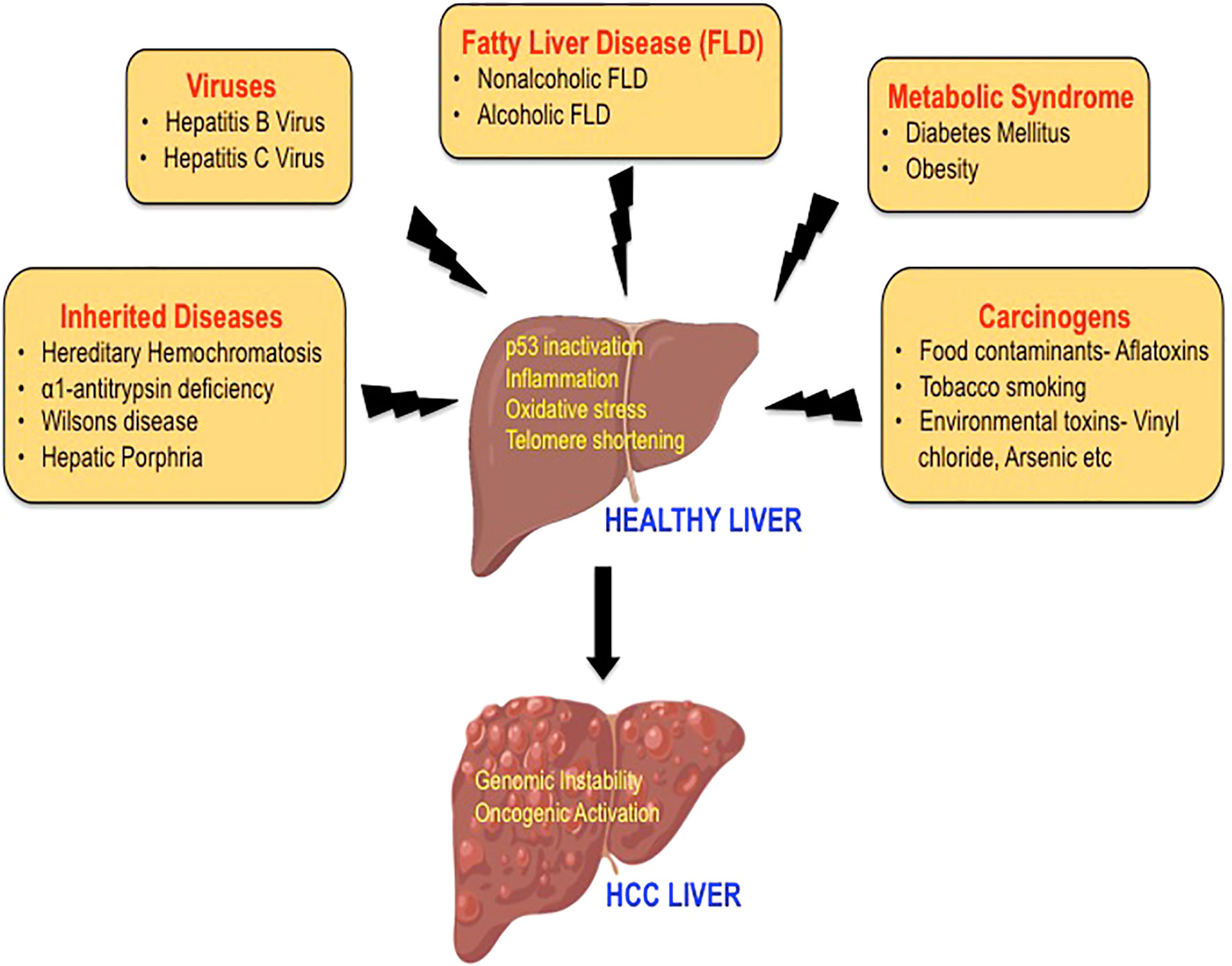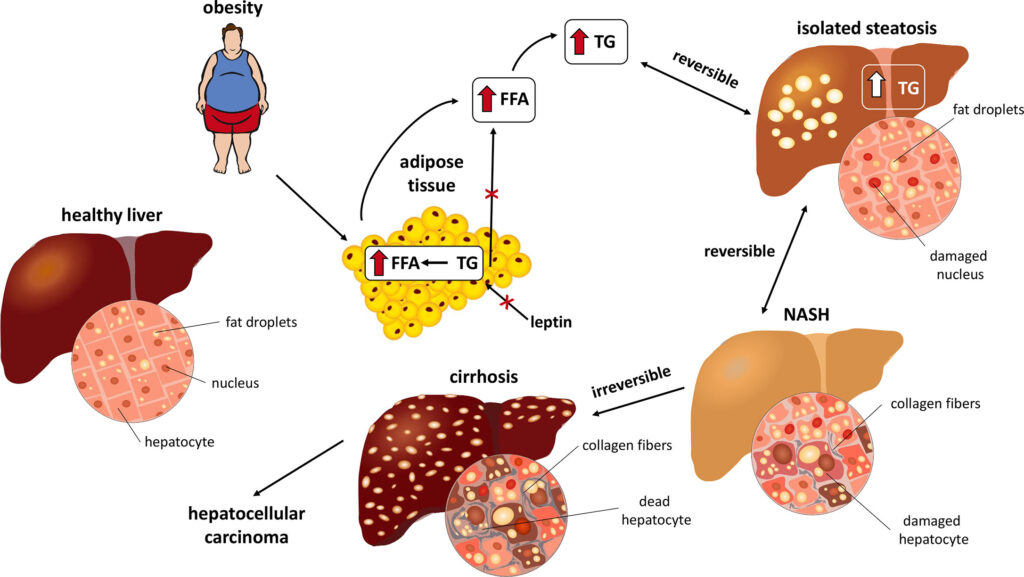Fatty liver disease, also known as hepatic steatosis, is a growing health concern worldwide. It occurs when excess fat accumulates in the liver, impairing its function. If left untreated, it can lead to severe complications such as cirrhosis or liver failure. In this article, we will explore the causes, types, symptoms, and treatment options for fatty liver disease.

What is Fatty Liver Disease?
Fatty liver disease refers to a condition where fat builds up in the liver cells. The liver plays a crucial role in processing nutrients, filtering toxins, and producing essential proteins. When fat accumulation exceeds five to ten percent of the liver’s weight, it is considered abnormal and may indicate fatty liver disease.
Types of Fatty Liver Disease
There are two primary types of fatty liver disease:
- Alcoholic Fatty Liver Disease: This type is caused by excessive alcohol consumption. Alcohol damages liver cells, leading to inflammation and fat buildup.
- Nonalcoholic Fatty Liver Disease: This type is not related to alcohol consumption. It is often associated with metabolic disorders like obesity, diabetes, and high cholesterol.
Causes of Fatty Liver Disease
The exact cause of fatty liver disease varies depending on the type. Below are the common factors contributing to each type:
Causes of Alcoholic Fatty Liver Disease
- Chronic alcohol abuse is the primary cause of alcoholic fatty liver disease. Alcohol interferes with the liver’s ability to metabolize fats, leading to their accumulation.
- Genetic predisposition can make some individuals more susceptible to liver damage from alcohol.
Causes of Nonalcoholic Fatty Liver Disease
- Obesity is one of the most significant risk factors. Excess body fat, especially around the abdomen, increases the likelihood of fat accumulation in the liver.
- Type 2 diabetes contributes to insulin resistance, which can lead to fat buildup in the liver.
- High cholesterol and triglyceride levels can also increase the risk of developing nonalcoholic fatty liver disease.
- Rapid weight loss or malnutrition can cause fat to accumulate in the liver.
- Certain medications, such as corticosteroids and tamoxifen, may contribute to the development of fatty liver disease.
Symptoms of Fatty Liver Disease
In its early stages, fatty liver disease often does not produce noticeable symptoms. Many people only discover they have the condition during routine medical tests or imaging studies. However, as the disease progresses, the following symptoms may appear:
- Fatigue and weakness
- Pain or discomfort in the upper right abdomen
- Enlarged liver
- Unexplained weight loss
- Jaundice (yellowing of the skin and eyes)
If the disease advances to cirrhosis, additional symptoms may include swelling in the legs and abdomen, confusion, and easy bruising.
Diagnosis of Fatty Liver Disease
Diagnosing fatty liver disease typically involves a combination of medical history, physical examination, and diagnostic tests. Here are the common methods used:
Medical History and Physical Examination
A healthcare provider will review the patient’s medical history, including alcohol consumption, family history of liver disease, and any underlying conditions like diabetes or obesity. During the physical exam, the doctor may check for an enlarged liver or signs of jaundice.
Blood Tests
Blood tests can detect elevated liver enzymes, which may indicate liver damage. Common tests include:
- Alanine transaminase (ALT)
- Aspartate transaminase (AST)
- Gamma-glutamyl transferase (GGT)
Imaging Studies
Imaging techniques such as ultrasound, computed tomography (CT) scans, or magnetic resonance imaging (MRI) can help visualize fat accumulation in the liver.
Liver Biopsy
In some cases, a liver biopsy may be necessary to confirm the diagnosis and assess the extent of liver damage. During this procedure, a small sample of liver tissue is removed and examined under a microscope.
Treatment Options for Fatty Liver Disease
Currently, there is no specific medication approved to treat fatty liver disease. However, lifestyle changes and managing underlying conditions can significantly improve liver health. Below are the primary treatment approaches:
Lifestyle Modifications
Lifestyle changes are the cornerstone of managing fatty liver disease. These include:
- Healthy Diet: A balanced diet rich in fruits, vegetables, whole grains, and lean proteins can help reduce liver fat. Avoiding processed foods, sugary beverages, and saturated fats is crucial.
- Weight Loss: Gradual weight loss of five to ten percent of body weight can significantly reduce liver fat. Rapid weight loss should be avoided, as it can worsen the condition.
- Regular Exercise: Engaging in moderate physical activity, such as brisk walking or cycling, for at least 150 minutes per week can improve liver health.
Managing Underlying Conditions
Addressing conditions like diabetes, high cholesterol, and hypertension is essential for managing fatty liver disease. This may involve:
- Medications to control blood sugar levels
- Statins or other cholesterol-lowering drugs
- Antihypertensive medications to manage blood pressure
Avoiding Alcohol
For individuals with alcoholic fatty liver disease, complete abstinence from alcohol is critical. Even small amounts of alcohol can exacerbate liver damage.
Vitamin E Supplements
In some cases, vitamin E supplements may be recommended for nonalcoholic fatty liver disease. Vitamin E is an antioxidant that can help reduce inflammation and improve liver function. However, it should only be taken under medical supervision.
Emerging Treatments
Researchers are exploring new treatments for fatty liver disease, including medications that target insulin resistance and inflammation. Some promising therapies are still in clinical trials but may become available in the future.
Preventing Fatty Liver Disease
While not all cases of fatty liver disease can be prevented, certain measures can reduce the risk:
- Maintain a healthy weight through diet and exercise
- Avoid excessive alcohol consumption
- Manage conditions like diabetes and high cholesterol
- Get regular check-ups to monitor liver health
Complications of Untreated Fatty Liver Disease
If left untreated, fatty liver disease can progress to more severe conditions, including:
- Nonalcoholic Steatohepatitis: This is an advanced form of nonalcoholic fatty liver disease characterized by liver inflammation and cell damage.
- Cirrhosis: Scarring of the liver tissue can occur due to prolonged inflammation, leading to impaired liver function.
- Liver Cancer: Individuals with cirrhosis are at an increased risk of developing liver cancer.
Living with Fatty Liver Disease
Living with fatty liver disease requires ongoing commitment to maintaining a healthy lifestyle. Regular follow-ups with a healthcare provider are essential to monitor liver function and address any complications early. Support groups and educational resources can also provide valuable guidance and encouragement.





